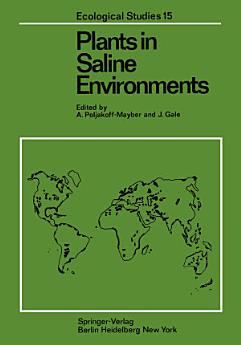Plants in Saline Environments
A. Poljakoff-Mayber · J. Gale
2012年12月 · Ecological Studies 第 15 冊 · Springer Science & Business Media
電子書
216
頁
report評分和評論未經驗證 瞭解詳情
關於本電子書
A. POLJAKOFF-MAYBER and J. GALE The response of plants to saline environments is of interest to people of many disciplines. In agriculture the problem of salinity becomes more severe every year as the non-saline soils and the non-saline waters become more intensively and more extensively exploited. Further expansion of agriculture must consider the cultivation of saline soils and the use of water with a relatively high content of soluble, salts. Moreover, industrial development in many countries is causing severe water pollution, especially of rivers, and mismanagement in agriculture often induces secondary salinization of soils and sources of irrigation water. From the point of view of agriculture it is, therefore, of the utmost importance to know the various responses of plants to salinity and to understand the nature of the damage caused by salinity to agricultural crops. Botanists and plant physiologists study plants, their form, growth, metabolism and response to external stimuli. A challenging problem for them is to understand the differences between glycophytes, plants growing in a non-saline environment and halophytes, plants which normally grow in salt marshes, in sea water or in saline soils. This includes the elucidation of structural and functional adaptations which enable halophytes to tolerate the saline environment, and also questions as to whether they only tolerate the saline environment or actually thrive in it. Ecologists and environmentalists are interested in the interrelationships be tween the organism, in this case the plant, and its environment, from the climatic, edaphic and biotic points of view.
為這本電子書評分
歡迎提供意見。
閱讀資訊
智慧型手機與平板電腦
筆記型電腦和電腦
你可以使用電腦的網路瀏覽器聆聽你在 Google Play 購買的有聲書。
電子書閱讀器與其他裝置
如要在 Kobo 電子閱讀器這類電子書裝置上閱覽書籍,必須將檔案下載並傳輸到該裝置上。請按照說明中心的詳細操作說明,將檔案傳輸到支援的電子閱讀器上。








